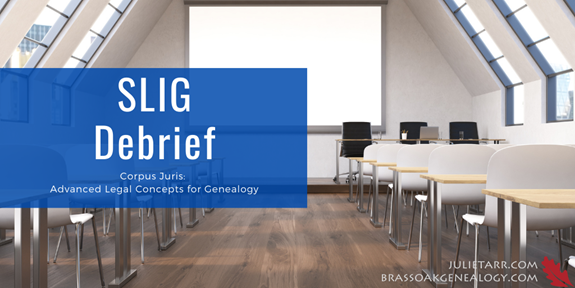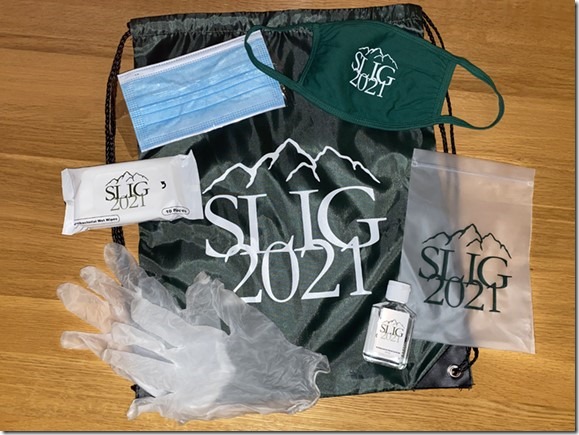Last month I attended the Salt Lake Institute of Genealogy (SLIG), virtually. I had the privilege of taking Corpus Juris: Advanced Legal Concepts for Genealogy coordinated by The Legal Genealogist herself, Judy G. Russell.
I knew the course would be amazing, but it really surpassed my expectations. Interestingly, I learned that I knew more about the subject than I thought I did. That said, I still learned a ton! We covered everything from laws of the US federal and state governments to church (canon) law. We learned how various laws impacted everyone, including criminals, the poor, and immigrants. There was so much wonderful information and it really inspired me to tackle a list of laws I’ve needed to investigate. And, of course, more ideas were added to that list.
In this course, you really get a feel for how the law applies to genealogy research…in more ways than you think! For example, knowing the law of the place and time can help you understand what records were created and why, as well as who kept the records, which can help you then find those records today. There are even situations where your ancestor may actually be part of a law (yes, really!). And finding certain supplemental materials associated with the lawmaking process can also lead to your ancestor being named in those records (such as a signature on a petition—I’ve got one for a direct-line ancestor!). Because laws dictated what could and could not be done, you can get a better understanding of why a person did what they did (for example, why did they head out of state to marry, or even divorce?). It’s really quite fascinating stuff!
While we didn’t get to go on our law library field trip, Judy and LaBrenda Garrett Nelson made it happen virtually, and it was a lot of fun. All of the instructors were fabulous, even in the virtual environment. A big thank you to Judy, LaBrenda, Rick Sayre, Dave McDonald, Tom Jones, and George Ryskamp for a wonderful course!
I don’t know if the schedule we had was a result of going virtual, or if this is how SLIG is done in person now (I haven’t attended since 2012), but it was sooooooo much easier for me to get through the week. Essentially, we had two morning sessions and two afternoon sessions, 30-minute breaks, and an hour-and-a-half lunch each day, as opposed to two morning sessions, three afternoon sessions, 15-minute breaks, and a 45 minute lunch every day except Friday at IGHR 2020 virtual, which left me feeling overwhelmed and unrested the entire week. The SLIG schedule was so much better—the longer breaks and lunch made it possible for me to decompress for a bit and come to the next session rested and ready to go.
I want to give a big shout-out to the entire SLIG team for making this an enjoyable experience. If there were any mishaps, I didn’t encounter them, nor hear about them. As far as I’m concerned, everything went off without a hitch!
Bottom line: Even if you don’t think this course is for you, let me tell you—it is! I highly recommend this course to everyone! You’ll be surprised at what you learn, and even more surprised when you apply what you learn to your research projects.
P.S. Thanks, SLIG team, for a welcome bag of SLIG swag.


